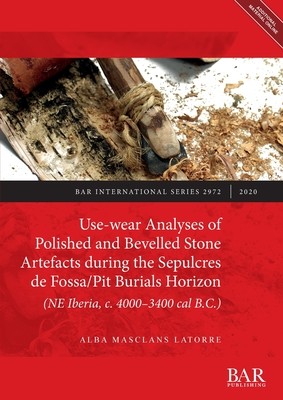
- We will send in 10–14 business days.
- Author: Alba Masclans Latorre
- Publisher: British Archaeological Reports (Oxford) Ltd
- ISBN-10: 1407317008
- ISBN-13: 9781407317007
- Format: 21 x 29.7 x 1.6 cm, minkšti viršeliai
- Language: English
- SAVE -10% with code: EXTRA
Use-wear Analyses of Polished and Bevelled Stone Artefacts during the Sepulcres de Fossa/ Pit Burials Horizon (NE Iberia, c. 4000-3400 cal B.C.) (e-book) (used book) | bookbook.eu
Reviews
Description
This work broadens the current interpretative framework about communities living in the North- East of the Iberian Peninsula around the turn of the fifth and fourth millennia BC. The empirical foundation of this research is the analysis of polished and bevelled stone artefacts, found both in funerary and domestic contexts. The new data provides fresh insight into the technical choices and the productive processes in which the tools were employed by the Neolithic groups. The results of this enquiry, together with the data concerning the age and sexual determination of the buried individuals as well as the artefact distribution across the graves, constitutes an unprecedented opportunity to understand and explain the archaeological record variability in terms of gender and other social hierarchies.
EXTRA 10 % discount with code: EXTRA
The promotion ends in 23d.12:56:46
The discount code is valid when purchasing from 10 €. Discounts do not stack.
- Author: Alba Masclans Latorre
- Publisher: British Archaeological Reports (Oxford) Ltd
- ISBN-10: 1407317008
- ISBN-13: 9781407317007
- Format: 21 x 29.7 x 1.6 cm, minkšti viršeliai
- Language: English English
This work broadens the current interpretative framework about communities living in the North- East of the Iberian Peninsula around the turn of the fifth and fourth millennia BC. The empirical foundation of this research is the analysis of polished and bevelled stone artefacts, found both in funerary and domestic contexts. The new data provides fresh insight into the technical choices and the productive processes in which the tools were employed by the Neolithic groups. The results of this enquiry, together with the data concerning the age and sexual determination of the buried individuals as well as the artefact distribution across the graves, constitutes an unprecedented opportunity to understand and explain the archaeological record variability in terms of gender and other social hierarchies.


Reviews